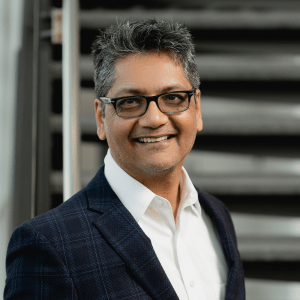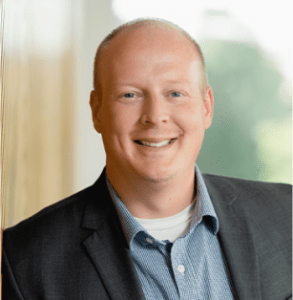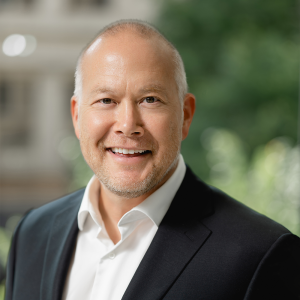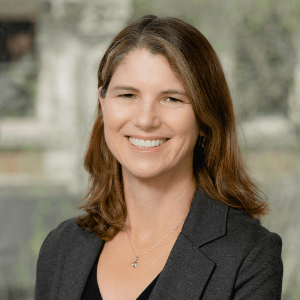The following is an article originally published July 21, 2023, by Forbes.
Should You Outsource Your Sustainability Services?
By Shashi Menon, EcoEngineers
In today’s business world, many functions are outsourced. For example, at my company, we outsource payroll, IT, legal services and taxes because of the highly specialized knowledge required to do the tasks and the economies of scale achieved by the vendors. It doesn’t make sense for us to hire a full-time, in-house attorney with expertise in contracts, employment law, litigation, etc., when there is a buffet of highly specialized lawyers I can access through one relationship with a law firm—and I can rely on them as needed.
A similar theme is emerging in sustainability services. As an expert in providing outsourced CSO services, my company and others in the space help firms achieve their sustainability goals.
One of the biggest challenges faced by businesses today is finding people to assimilate all the knowledge needed to maneuver the energy transition, which places increasing pressure on businesses to reduce emissions, promote circularity and track sustainability. According to LinkedIn’s Global Green Skills Report 2022, demand for “green skills” is outpacing supply, and the specialization of “green skills” is proliferating—from climate and renewable energy to environmental awareness and corporate social responsibility.
Companies are responding to this need by appointing a chief sustainability officer, or CSO, who is expected to lead the response to the energy transition. The skills required to do this are complex, technical and often beyond the abilities of one person. It requires engineers, legal experts, market analysts, investment bankers and project managers.
Outsourcing CSO services, like outsourcing legal and accounting, allows businesses to access specialized sustainability experts. Outsourced CSOs can provide sustainability, business strategy and operational guidance related to the energy transition.
Making The Decision To Outsource
Whether you are leading a small startup or a large publicly traded firm, here are several instances where outsourcing CSO services can be an effective way to address some of today’s carbon challenges:
-
New climate startups: You have launched a successful business model and are fortunate enough to be juggling multiple balls—hiring and training, sales and business development, investor relations and more. Your leadership team may not have time to keep up with global climate policies, emerging incentive programs, new competing technologies, evolving carbon markets, data standards and carbon accounting rules.
-
Small or midsized privately held businesses: You have loyal customers who like your products or services, and you are growing steadily in a stable environment. Recently, these customers have been asking casual questions about the company’s sustainability efforts. The leadership team doesn’t have the time or the baseline knowledge to analyze the company’s sustainability.
-
CEOs or CFOs: It’s time to update investors and shareholders about profit margins, strategic plans and key performance indicators, and they also want to see an analysis of energy transition risks and climate risks. As a believer in risk-averse governance, you know you should include this in your quarterly report, but you are not clear where to start.
-
One-person sustainability departments: Pressure from the board and upper management has forced one person to research and respond to a variety of questions over the years, and their role has evolved to include “sustainability expert.” But the questions are becoming more complex and overwhelming. A climate scientist, a policy analyst and a process engineer are needed on the team to fully respond to the situation, but the budget doesn’t allow this.
Of course, outsourcing a task core to a business’ strategic direction is not always a good idea. A CSO is a part of the leadership team and has access to confidential information that is key to a company’s success and competitive advantage, which are not things that can be shared with an outside firm before establishing a high level of trust. In these cases, it is better to plan to have an in-house CSO who can incorporate these business secrets into a long-term sustainability strategy.
Getting Started With An Outsourced CSO
The CSO is usually key to building the company’s “green team” that has the passion for facilitating the energy transition and the specialized skills needed to perform the critical analysis needed. If you are outsourcing a CSO, make sure you have established an internal team with diverse skill sets; these include climate scientists, market analysts, process engineers, policy advisors, etc.
The energy transition requires a business to rethink how it’s doing business, and a CSO must frequently interact with purchasing, marketing, legal, accounting and operations, and talk their language.
A key CSO function is communicating complex technical concepts in simple language. Ask your CSO to conduct an analysis of the risks and opportunities your business faces, so when a customer or an investor casually asks what you are doing on the sustainability front, you can give a clear and confident response.
CSOs lead a company’s response to the energy transition: Look for someone who is unbiased, data-driven, aspirational in their approach, has a strong grasp of internal and external stakeholder needs, and a peer network that includes policy analysts, engineers, auditors, carbon life cycle experts, etc.
The biggest challenge in deciding whether to outsource the CSO function is how to integrate someone external into the day-to-day details of your team’s workflow. Should you give them a company email? How much confidential information should you share? Who should be the main point of contact internally for the outsourced service? Each company has to develop its own processes to govern the level of outsourcing it wishes to put in place.
Some companies starting fresh on the energy transition journey need a temporary leader with a full team of external technical resources that they can use as needed. Others, further down the path, may have an internal CSO on the team, but they need to outsource technical expertise and receive policy briefings and technical analyses, as needed.
Outsourcing the CSO function can make it easier for businesses to make sustainability and strategic decisions. An outsourced CSO can analyze the risks and opportunities a business faces due to climate policy, carbon pricing, consumer preferences or even severe weather events, so when a customer or an investor asks what you are doing on the sustainability front, you can give a clear and confident response.
For more information about the EcoEngineers and the services we offer, contact us at clientservices@ecoengineers.us or complete a contact form.










 DES MOINES, Iowa–(
DES MOINES, Iowa–(



